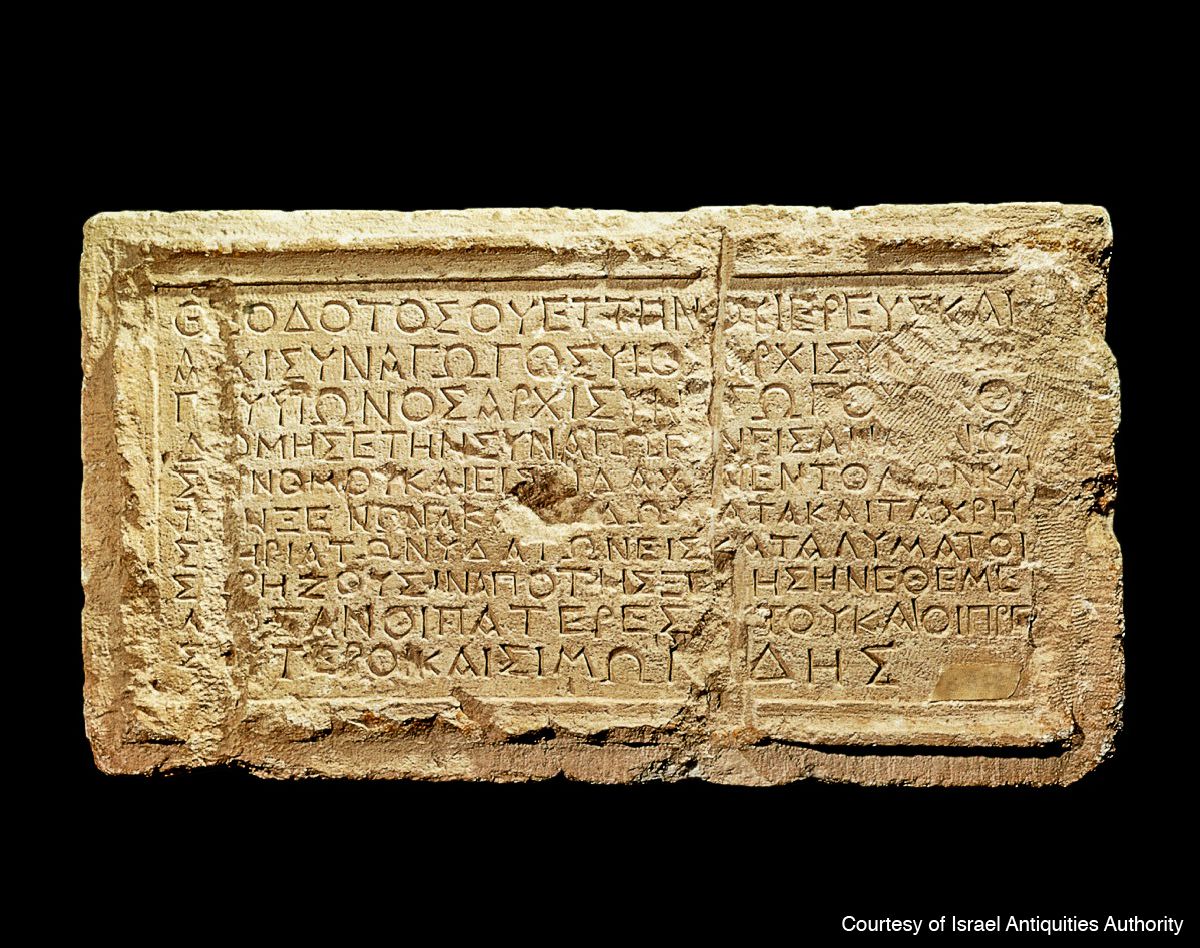The content displayed below is for educational and archival purposes only.
Unless stated otherwise, content is © Watch Tower Bible and Tract Society of Pennsylvania
You may be able to find the original on wol.jw.org

Theodotus Inscription to Greek-Speaking Jews
The text shown here, carved on a limestone slab measuring 72 cm (28 in.) in length and 42 cm (17 in.) in width, is known as the Theodotus Inscription. It was discovered at the beginning of the 20th century on the hill of Ophel in Jerusalem. The text, written in Greek, refers to Theodotus, a priest who “built the synagogue for the reading of the Law and for teaching the commandments.” The inscription has been dated to the time before the destruction of Jerusalem in 70 C.E. It confirms the presence of Greek-speaking Jews in Jerusalem in the first century C.E. (Ac 6:1) Some believe that this synagogue was “the so-called Synagogue of the Freedmen.” (Ac 6:9) The inscription also mentions that Theodotus, as well as his father and his grandfather, had the title ar·khi·sy·naʹgo·gos (“presiding officer of the synagogue”), a title used a number of times in the Christian Greek Scriptures. (Mr 5:35; Lu 8:49; Ac 13:15; 18:8, 17) The inscription also states that Theodotus built accommodations for those visiting from abroad. The lodging mentioned in the inscription would likely have been used by Jews visiting Jerusalem, especially those who came during the yearly festivals.—Ac 2:5.
Credit Line:
Courtesy of Israel Antiquities Authority
Related Scripture(s):